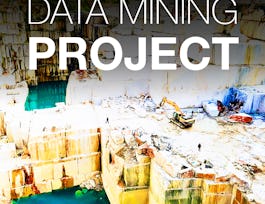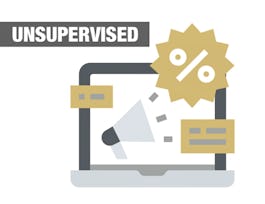In this course, you will learn to analyze data in terms of process stability and statistical control and why having a stable process is imperative prior to perform statistical hypothesis testing. You will create statistical process control charts for both continuous and discrete data using R software. You will analyze data sets for statistical control using control rules based on probability. Additionally, you will learn how to assess a process with respect to how capable it is of meeting specifications, either internal or external, and make decisions about process improvement.



Stability and Capability in Quality Improvement
This course is part of Data Science Methods for Quality Improvement Specialization

Instructor: Wendy Martin
Sponsored by Coursera Learning Team
1,881 already enrolled
(13 reviews)
Recommended experience
What you'll learn
Understand how to use, select, and interpret process control charts to identify special causes of variation
Create and interpret control charts for normal and non-normal distributions
Create and interpret control charts for discrete data
Analyze the capability of a process to meet customer specifications
Skills you'll gain
Details to know

Add to your LinkedIn profile
5 assignments
See how employees at top companies are mastering in-demand skills

Build your subject-matter expertise
- Learn new concepts from industry experts
- Gain a foundational understanding of a subject or tool
- Develop job-relevant skills with hands-on projects
- Earn a shareable career certificate


Earn a career certificate
Add this credential to your LinkedIn profile, resume, or CV
Share it on social media and in your performance review

There are 5 modules in this course
In this module, you will learn how to define a process and break it down into components for the purpose of identifying potential sources of variation. You will learn how to classify variation into common and special causes through the use of a control chart. You’ll discover the Taguchi Loss function, and how it relates to the philosophy of quality, and its association to the product control and process control cycles. You will learn the basic anatomy of a control chart as well as the process used to create a control chart, and common errors encountered when using a control chart in practice. You will be able to calculate an appropriate sample size, as well as determine when a process is in control or out of control based on statistical rules.
What's included
13 videos2 readings1 assignment2 discussion prompts
In this module, you will learn how to select the appropriate chart given information on sample size and data type. You’ll learn how to create and interpret control charts with subgroups for variables data, as well as how to create them in R. You will also create and interpret control charts with a sample size of one data that is normally distributed. You'll learn how to monitor other statistics using the Individuals and Moving Range Chart. Finally, you will interpret the control charts for statistical control / stability.
What's included
11 videos1 assignment1 discussion prompt
In this module, you will learn how to create an X and Moving Range Chart when the underlying distribution is not normally distributed. You’ll learn how to calculate control limits for the X and MR Charts with LogNormal transformed distribution and exponential distribution. Additionally, you will learn how to fit a distribution to the data and calculate control limits associated with the selected distribution. Finally, you will interpret the control charts for statistical control / stability.
What's included
12 videos1 assignment1 discussion prompt
In this module, you will learn how to compare process variation to customer specifications. You’ll learn the three indices associated with capability measures and the three indices associated with performance measures. Additionally, you will learn to assess capability and performance when the data are not normally distributed.
What's included
16 videos1 assignment1 discussion prompt
In this module, you will learn how to create and analyze control charts for discrete data. You will learn how to differentiate between data that are Binomial and data that are Poisson distributed in order to select the appropriate control chart. Additionally, you will learn to assess capability using an appropriate discrete probability model.
What's included
12 videos1 assignment1 discussion prompt
Instructor

Offered by
Why people choose Coursera for their career




Recommended if you're interested in Data Science

University of Michigan

University of Colorado Boulder

University of Colorado Boulder

University of Colorado Boulder

Open new doors with Coursera Plus
Unlimited access to 10,000+ world-class courses, hands-on projects, and job-ready certificate programs - all included in your subscription
Advance your career with an online degree
Earn a degree from world-class universities - 100% online
Join over 3,400 global companies that choose Coursera for Business
Upskill your employees to excel in the digital economy


